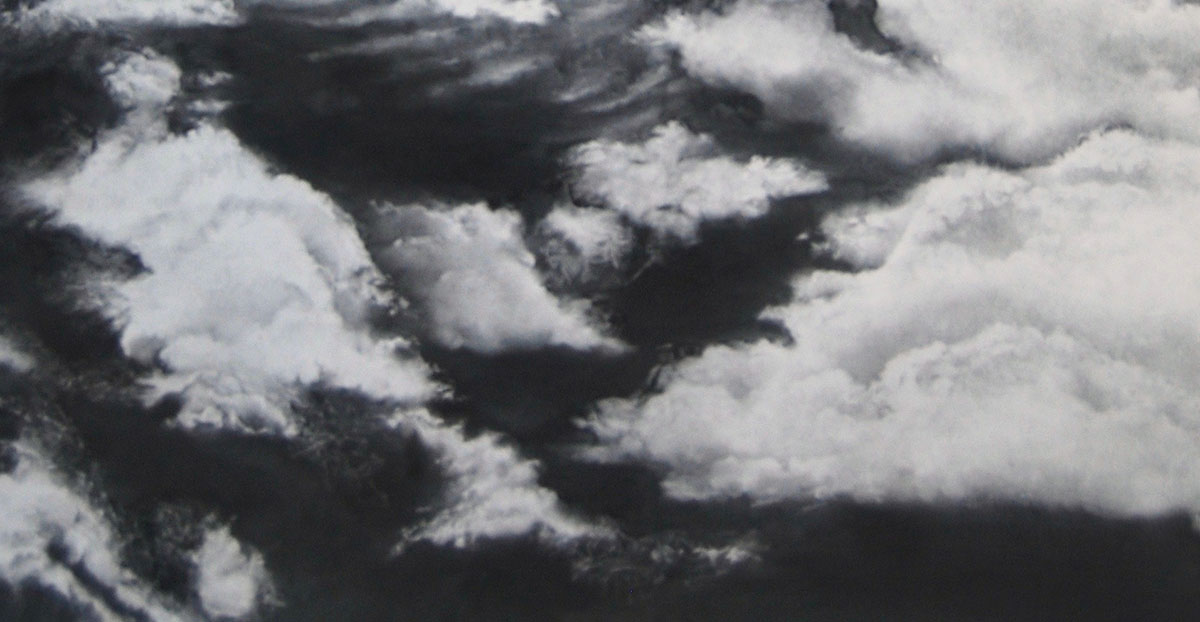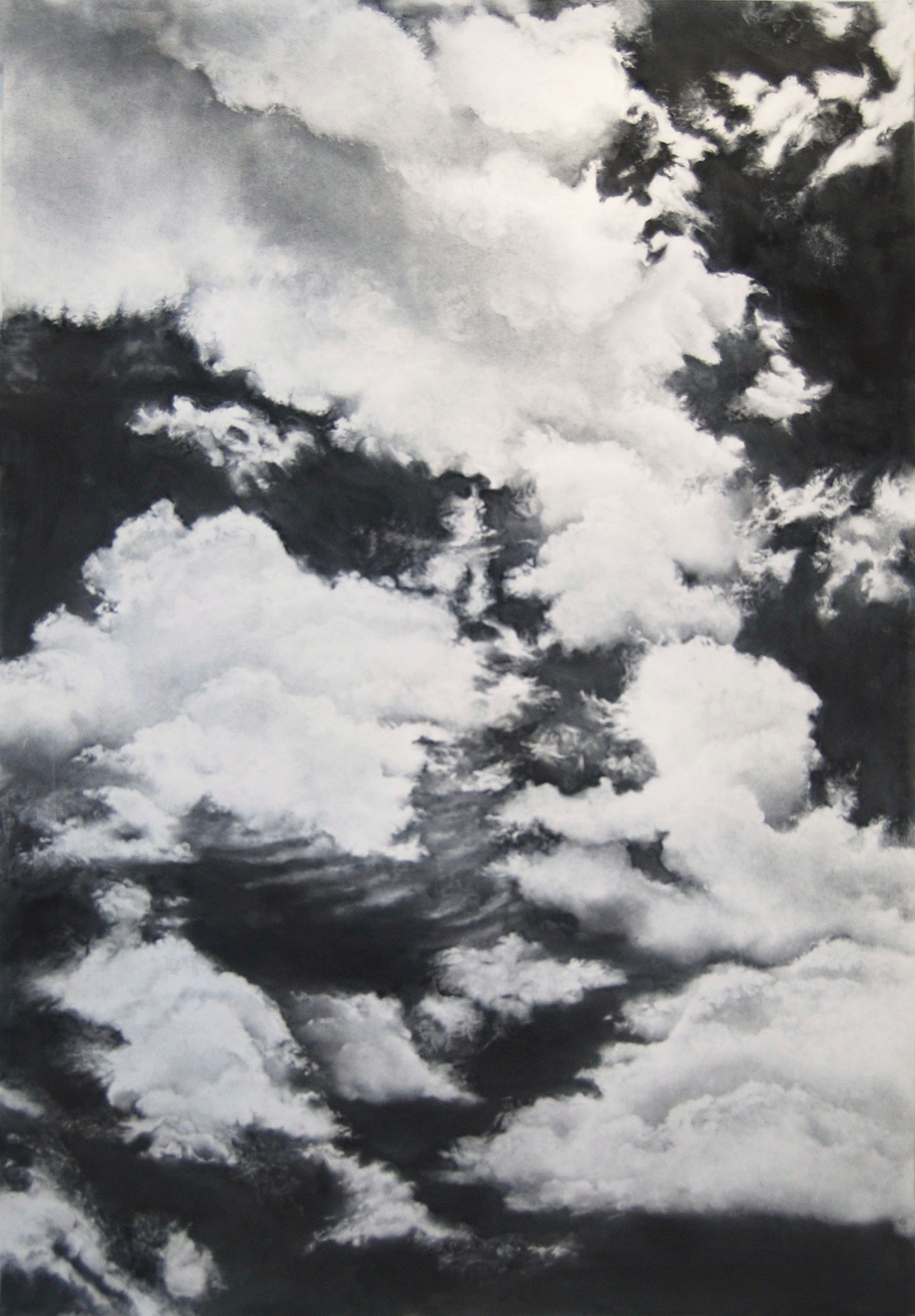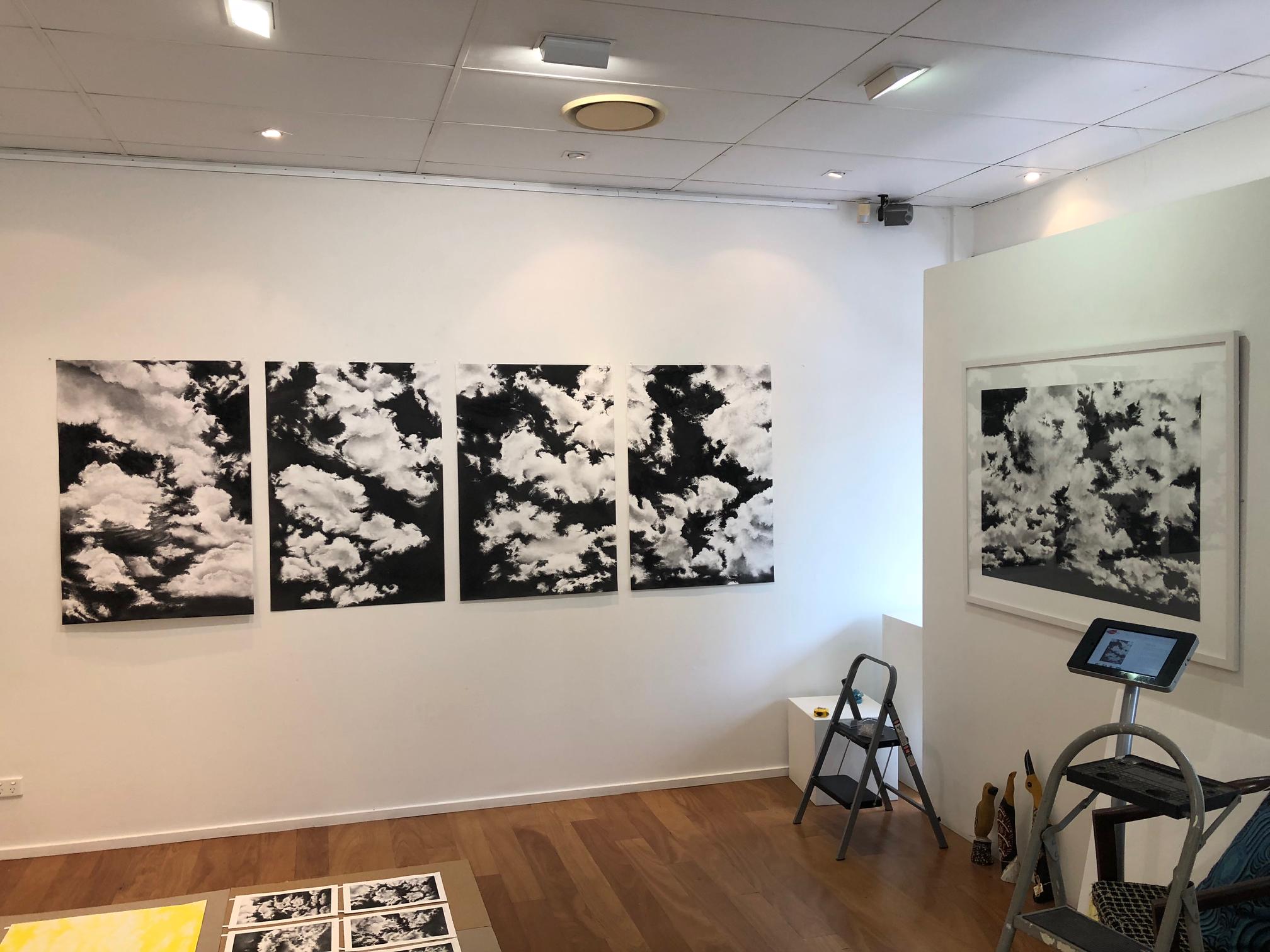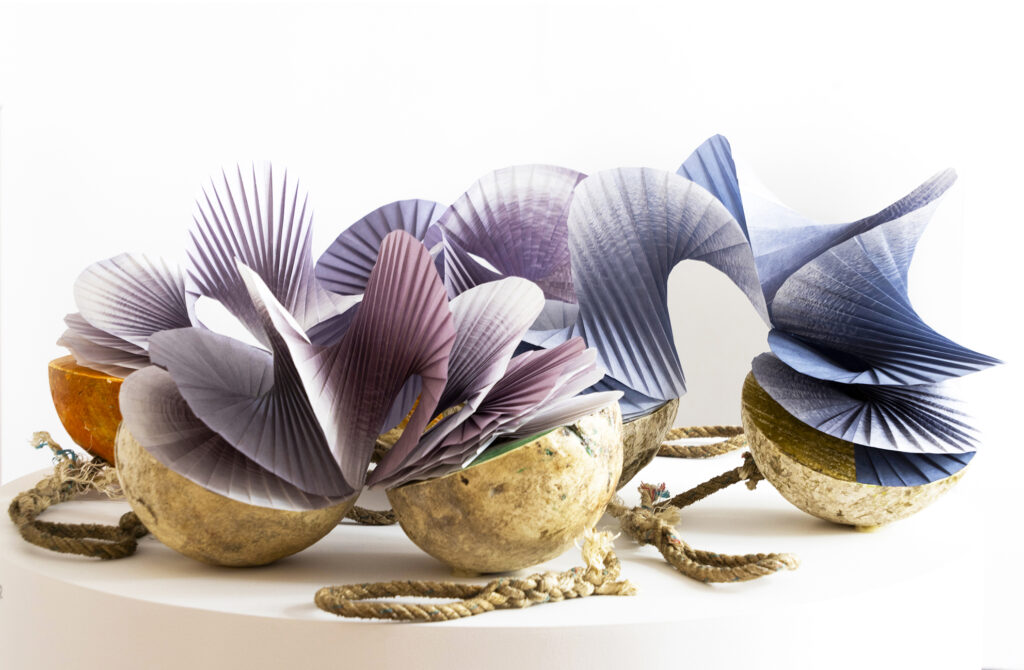
Winsome Jobling:
‘Instability’
Winsome Jobling discusses her new exhibition ‘Instablity’.
April 1, 2018
In Interviews,
Printmaking
Imprint: What is the premise for this exhibition and how have you been working towards it?
Winsome Jobling: It was an unusually cloudy and wet dry season in 2016. I began documenting the cloudy days from June to August by taking photographs, and I did the same last year. The 2017 dry season was the warmest on record.
These drawings are made using recycled photocopy toner. The composition of photocopy toner is generally sixty per cent heat-sensitive micro-plastic particles and the rest is iron oxide and pigment. I have previously used toner to replicate tusche washes on plastic drypoint plates, as a pigment additive to handmade paper and experimenting with stencils lead to drawing with it.
Imprint: What are some of the foundation ideas for the work in the exhibition, and what are visitors likely to experience?
Winsome Jobling: Clouds are beautiful, cottony, floating arrangements of water molecules but there is a sinister undertone to the work. The series of small works are titled For the Blind and the date of the dry season image is stamped in braille in the corner—for the climate change naysayers.
The large works draw you in, these are the dry season! 2017; it’s photocopy toner, it’s plastic; paperless offices, industry, waste… One large work August 20 looks beautiful but then you notice a large splatter of glossy, melted copy toner to spoil your reverie.
The science behind the work relates to the fact that water vapour is a greenhouse gas, so more water vapour leads to even more warming. A hotter atmosphere is able to take up and retain more moisture—every degree of warming results in an average pone per cent increase in rainfall.
Plastic is a substance that the earth cannot digest—it just breaks down into smaller and smaller pieces; in the air, ground, rivers and finally in large concentrations of micro-plastics in the oceans.
The human impact on the natural world is central to my work and my materials always carry an intrinsic message.
Imprint: How was the work developed technically and what were some of the challenges involved?
Winsome Jobling: As with all my work I love to experiment and push my materials. After learning what they are made from I can understand how they will react in different situations and manipulate their properties. Toner brands also vary in colour and composition. The toner is very fine and if I am laying it on thickly I will wear a mask. I cannot work under a fan or in a breeze so am in the hottest part of my studio. I also have to remember not to blow the eraser crumbs away but lift them with a soft brush.The smaller works were easy to heat set on my sandwich toaster but for the bigger drawings 110 x 70 I used a heat gun (for paint stripping) under the paper, being careful not to scorch it, then heated from the top.
Imprint: What future projects are you working on?
Winsome Jobling: I have been invited to represent the NT for the Great Australian Landscape project at BOAA (Biennale of Australian Art Ballarat from September 21 2018) and am working on an eight-metre roll drawing of clouds using copy toner. I also have a small installation exhibition at BOAA of handmade paper and print works
I have also been invited to exhibit a small installation for six weeks as part of the BOAA. Handmade paper and print works with specifically designed lighting will be exhibited to evoke the Top End bush and the interconnectedness of the human and natural world.
The paper from local plants uses innovative wet sheet-forming techniques combined with earth pigments, bush dyes and drypoint. The lighting will add a fourth dimension—time.
I am still working on a series about gravitational waves and also want to do a show of large, two-metre handmade paper banknotes.
Instability is at Nomad Art until 7 April.






